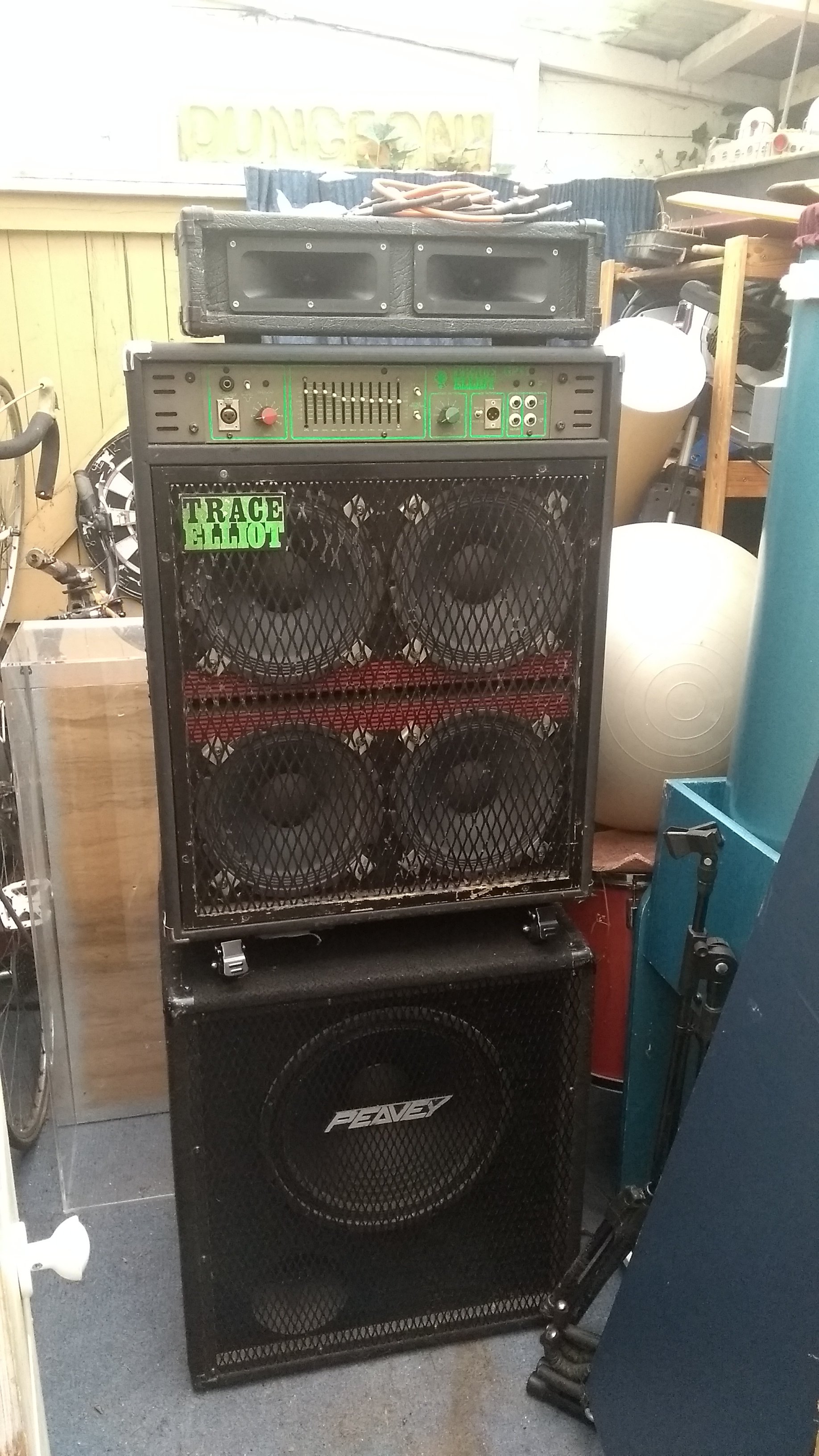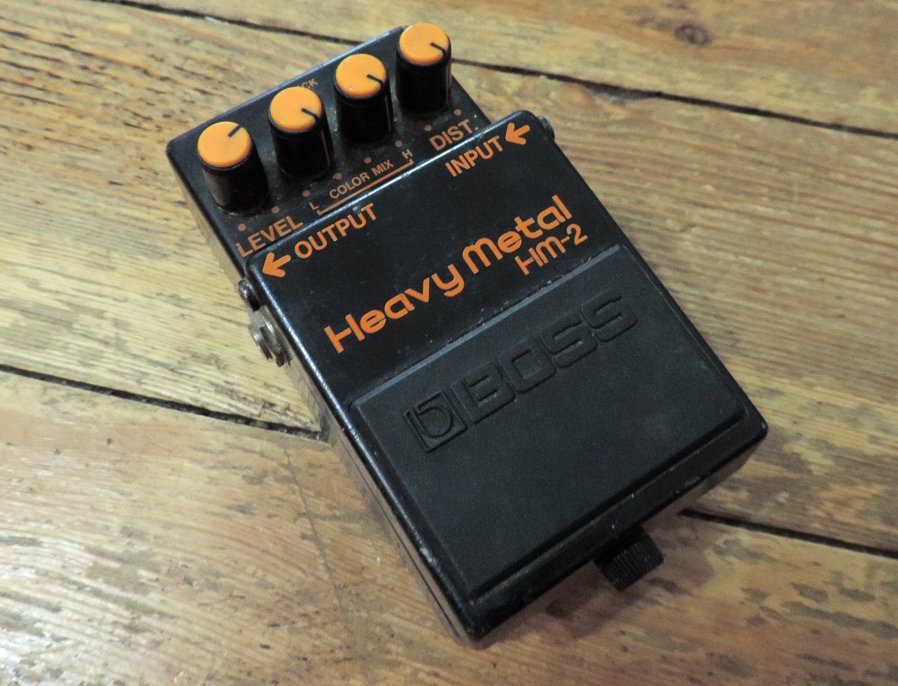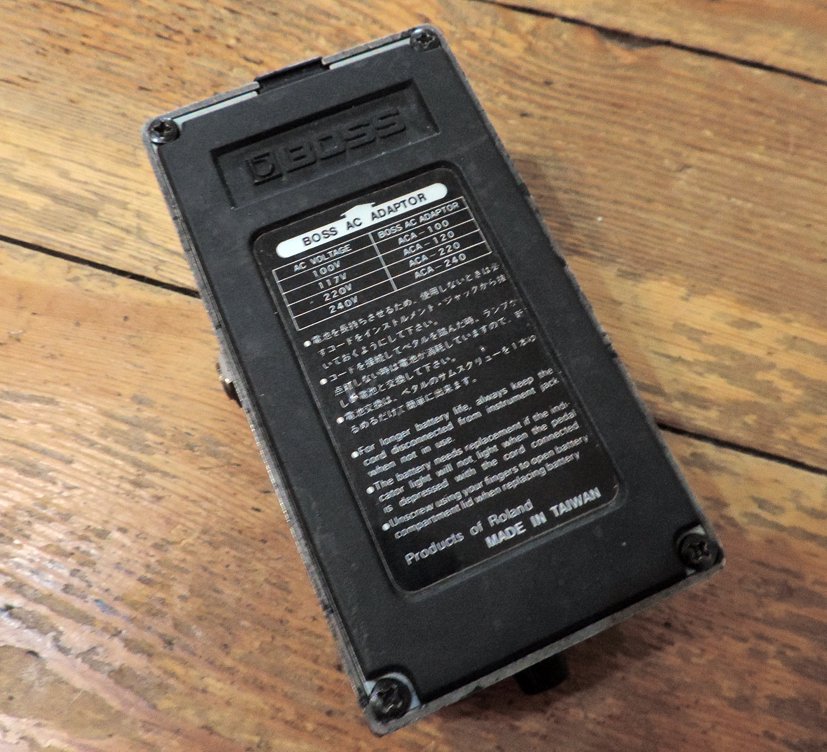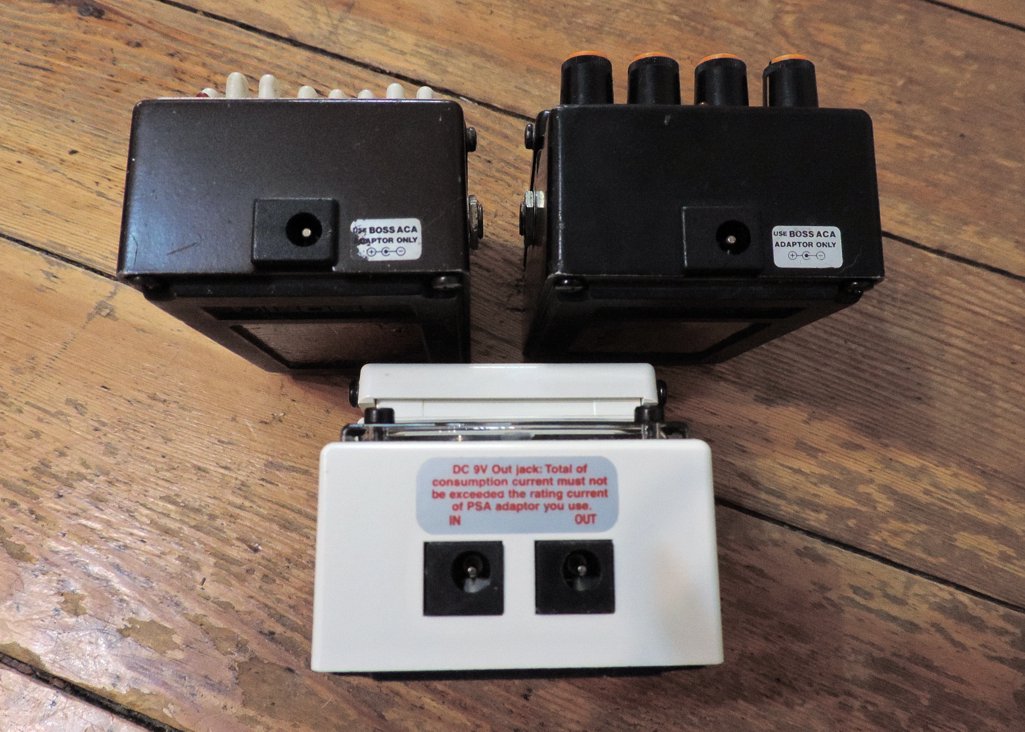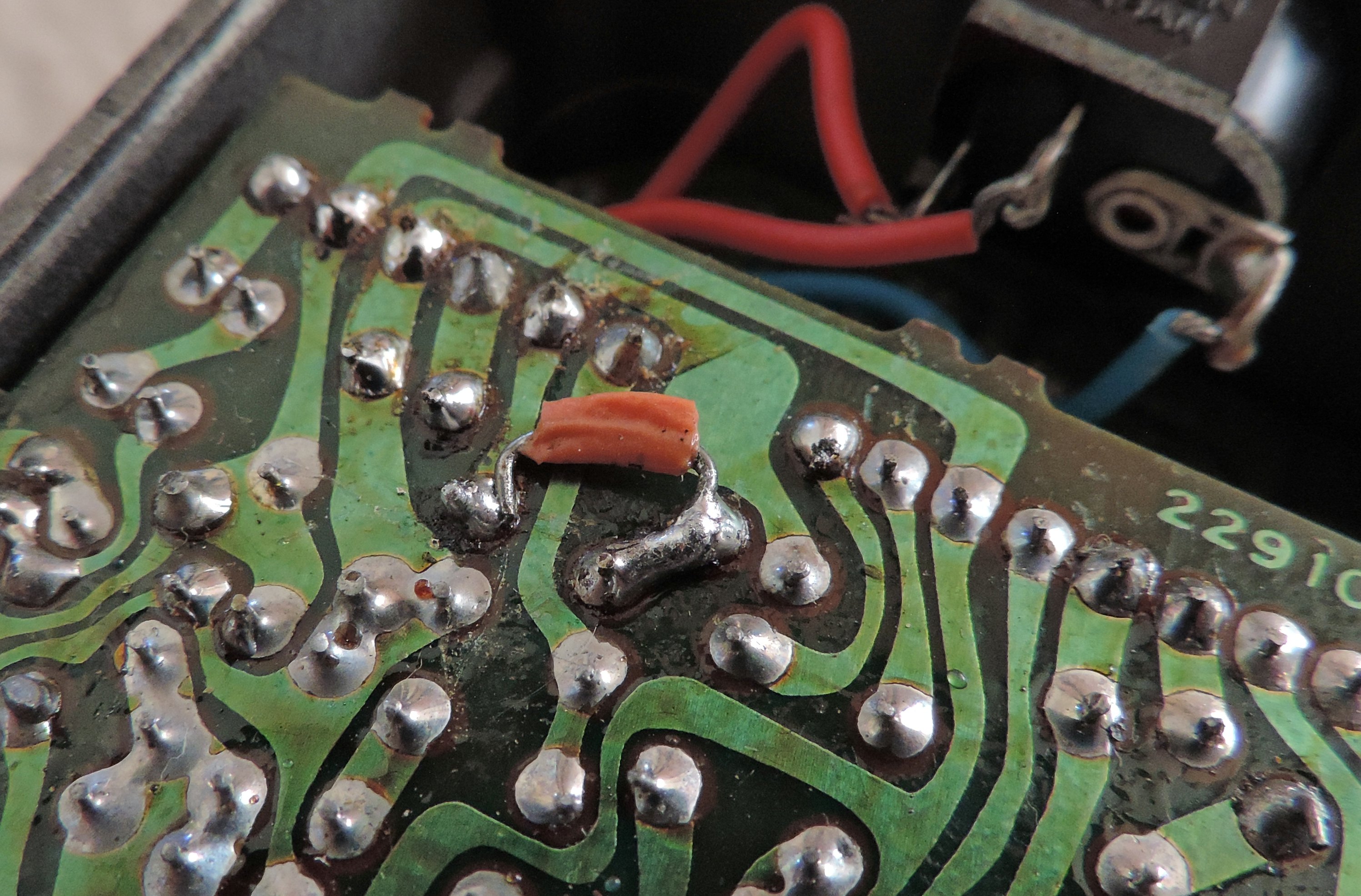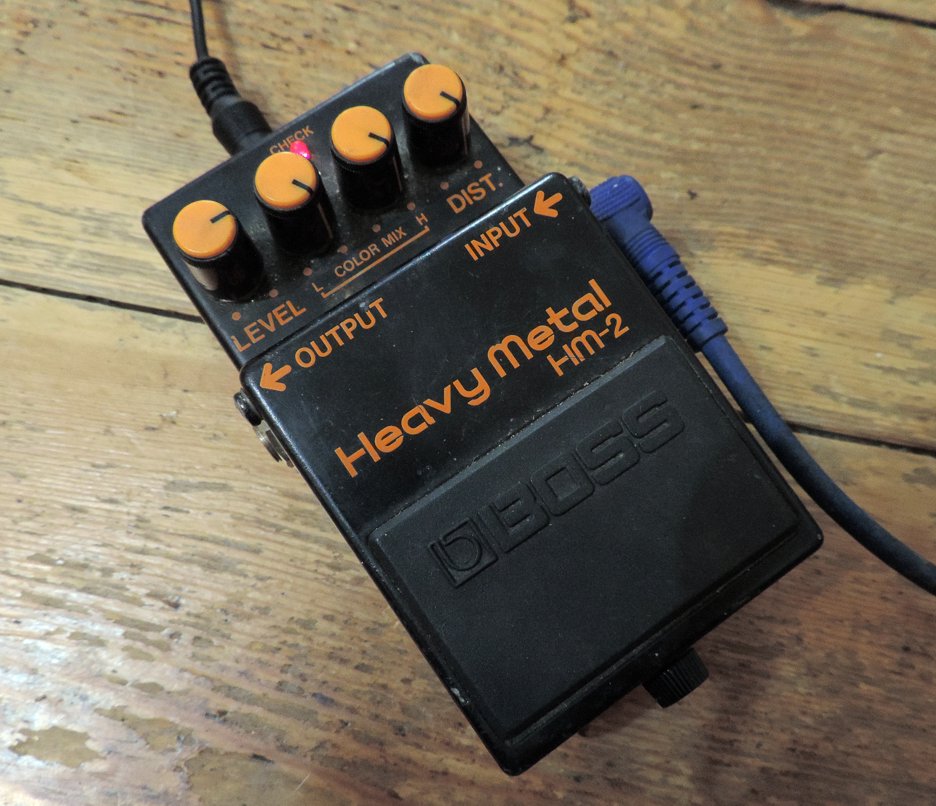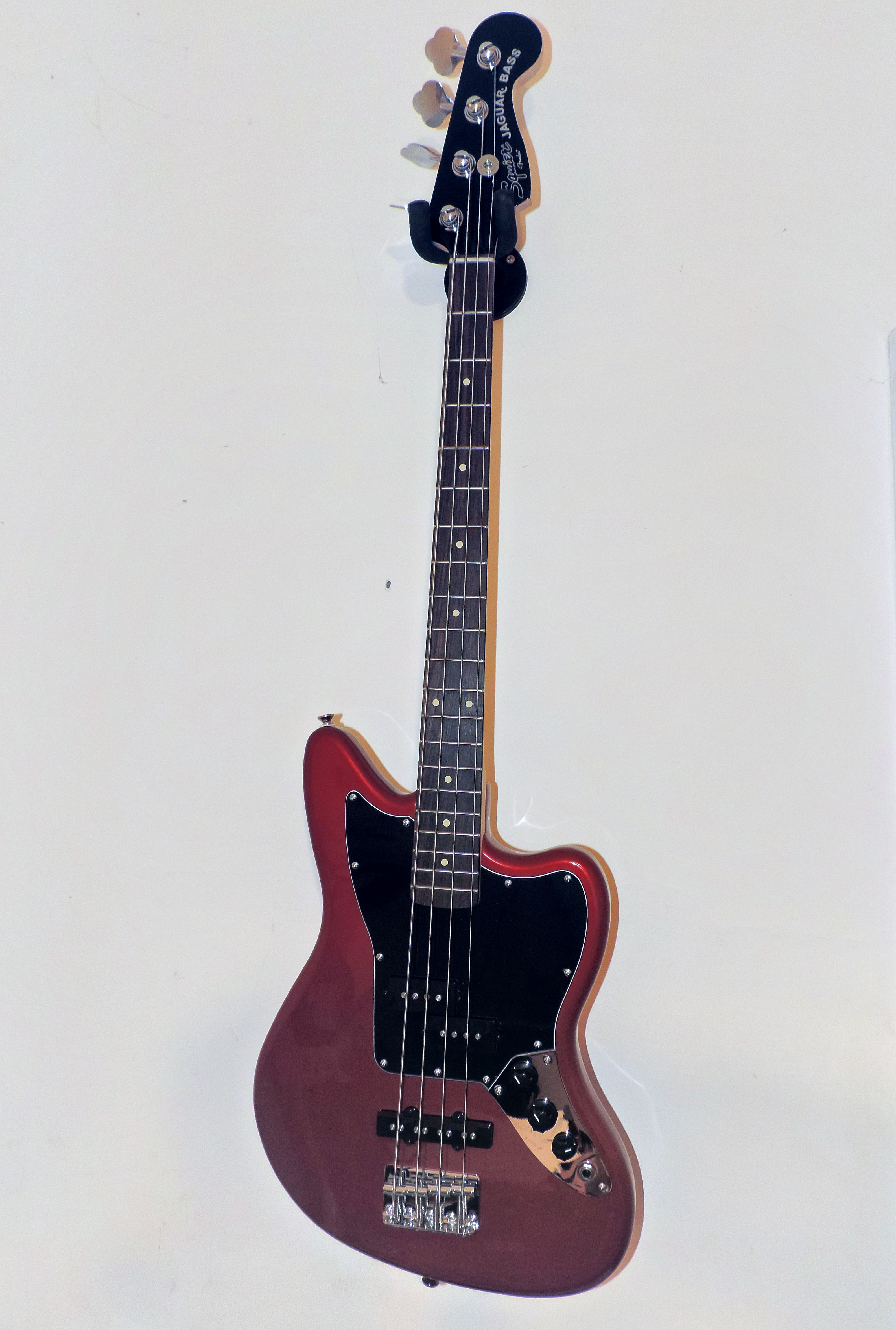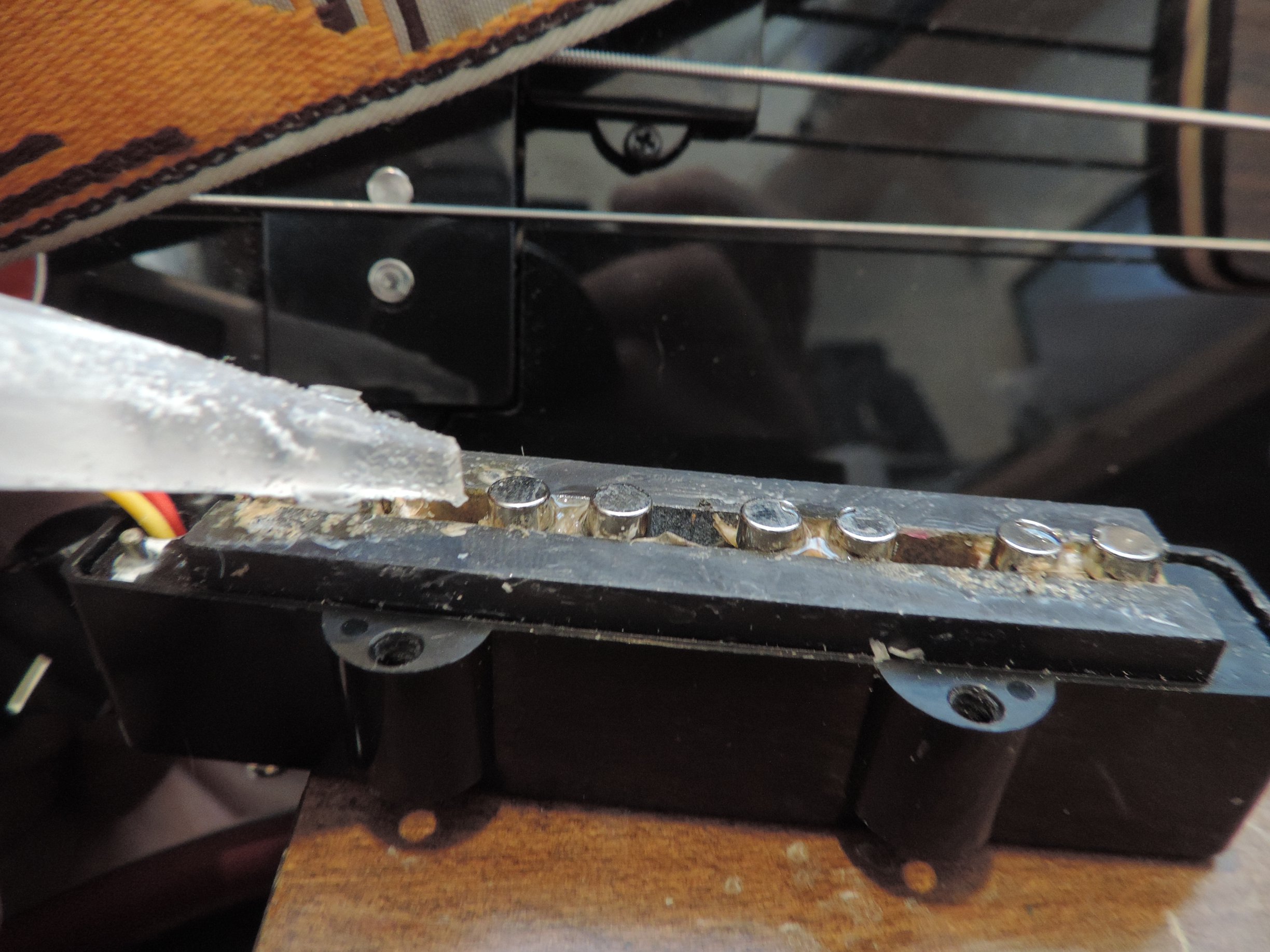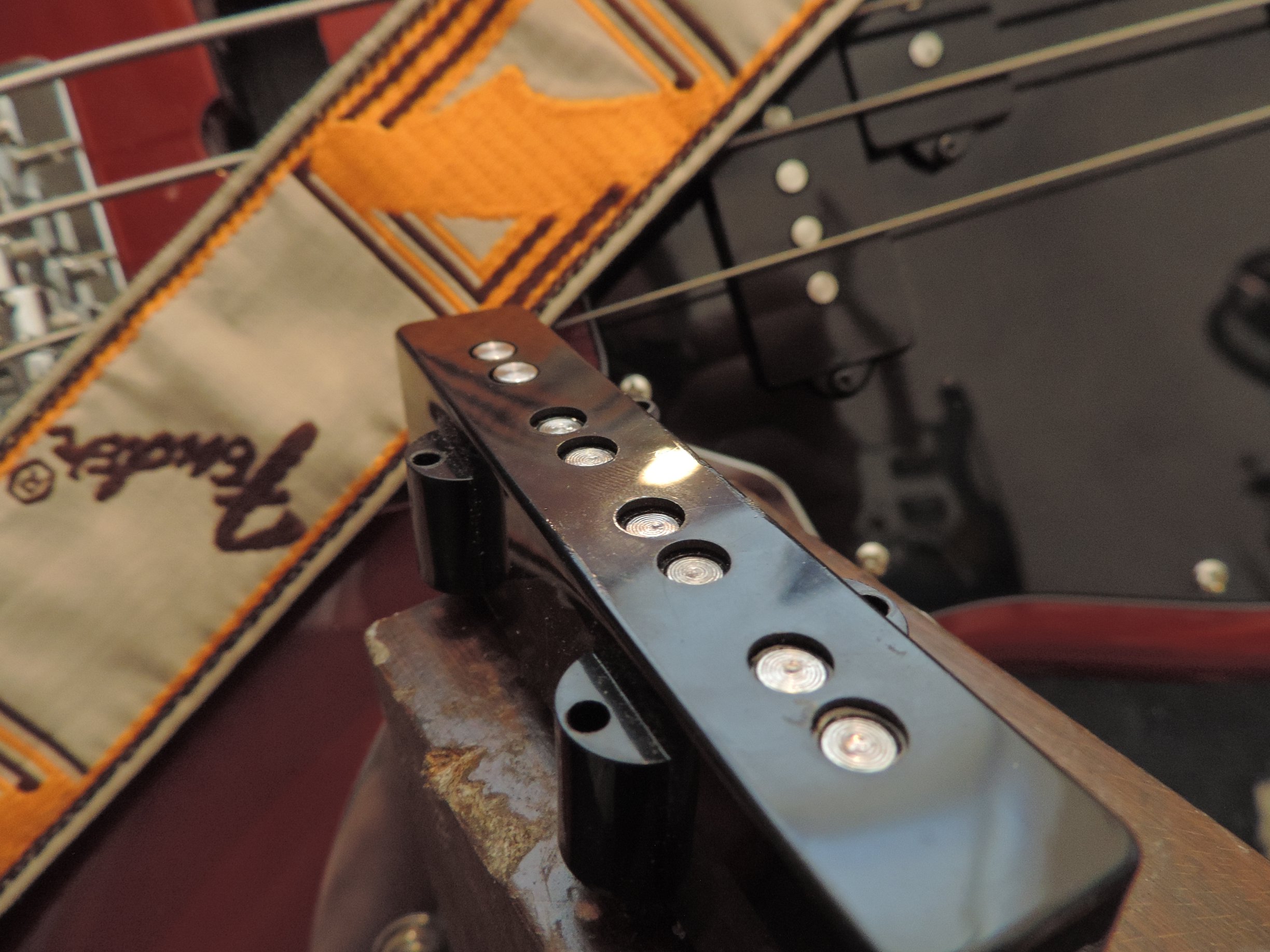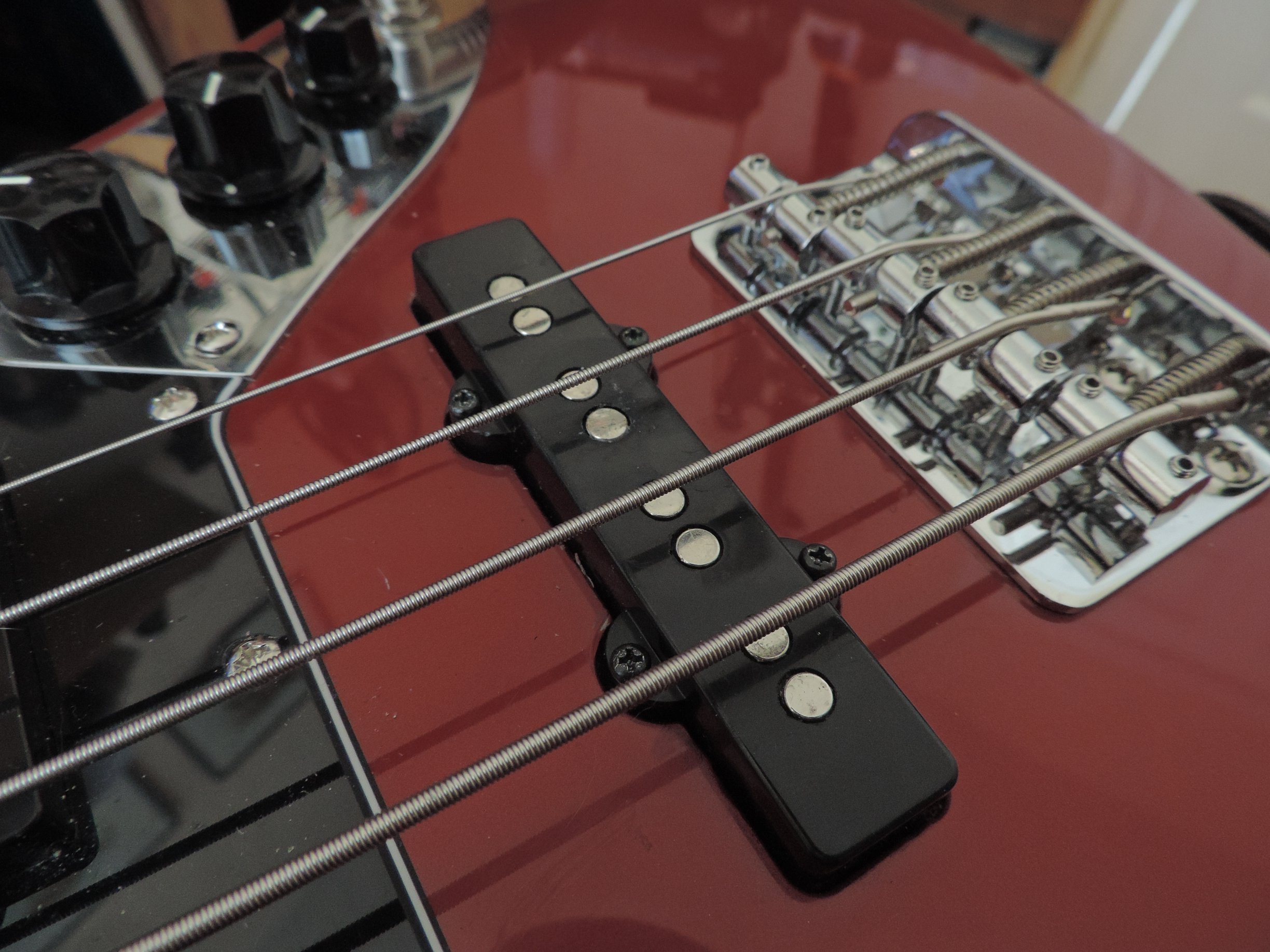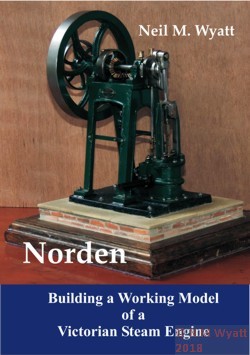If you find this website useful, please check out my books or visit my Amazon Author page. Or even Buy Me a Coffee!
Music
The version of Bach's Bourée on the album Stand Up by Jethro Tull has one of the greatest walking bass lines of all time, performed by Glen Cornick.
I'd always wanted to plat his bass line, but got very frustrated by the tabs available online which seemed to either have both obvious errors and even the more accurate ones used really strange fingerings that made them difficult to play. So I finally put in the effort and produced my own tab guided by what's online, my own interpretation and how I play this amazing piece of music.
Here's the original on YouTube.
In mid-2022 I started designing band posters, mostly for bands playing at the Penarth Ex Servicemen's Club. The club has a skittle alley which also functions as an events room. It has very good acoustics and there's a PA and lights, so it's a great venue used for all sorts of live music at weekends under the name 'The Music Alley'.
Here are some of the posters I am most pleased with, if you'd like me to design a poster for your band or venue, drop me an This email address is being protected from spambots. You need JavaScript enabled to view it..
Stonehouse:
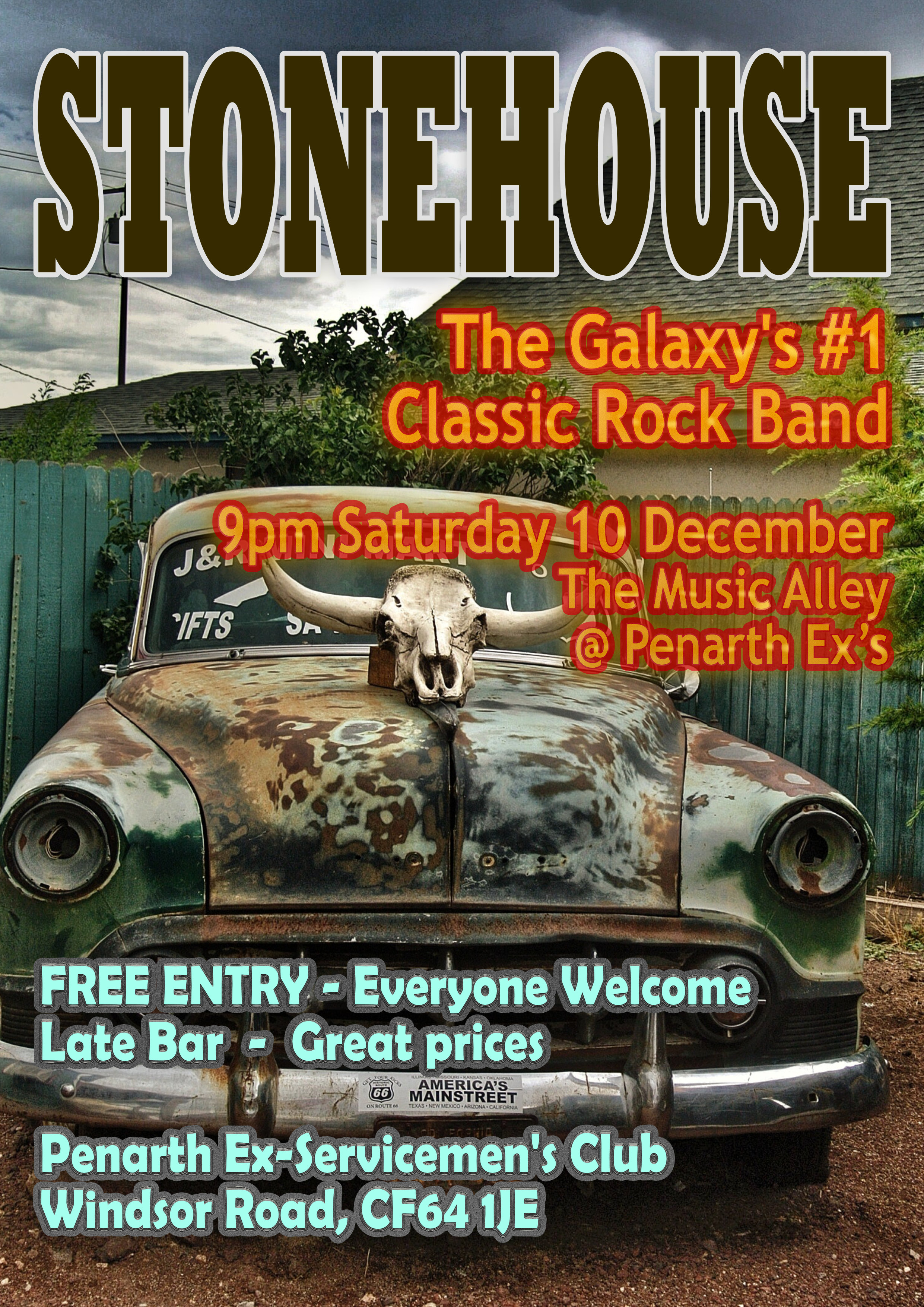
Bluesfire:
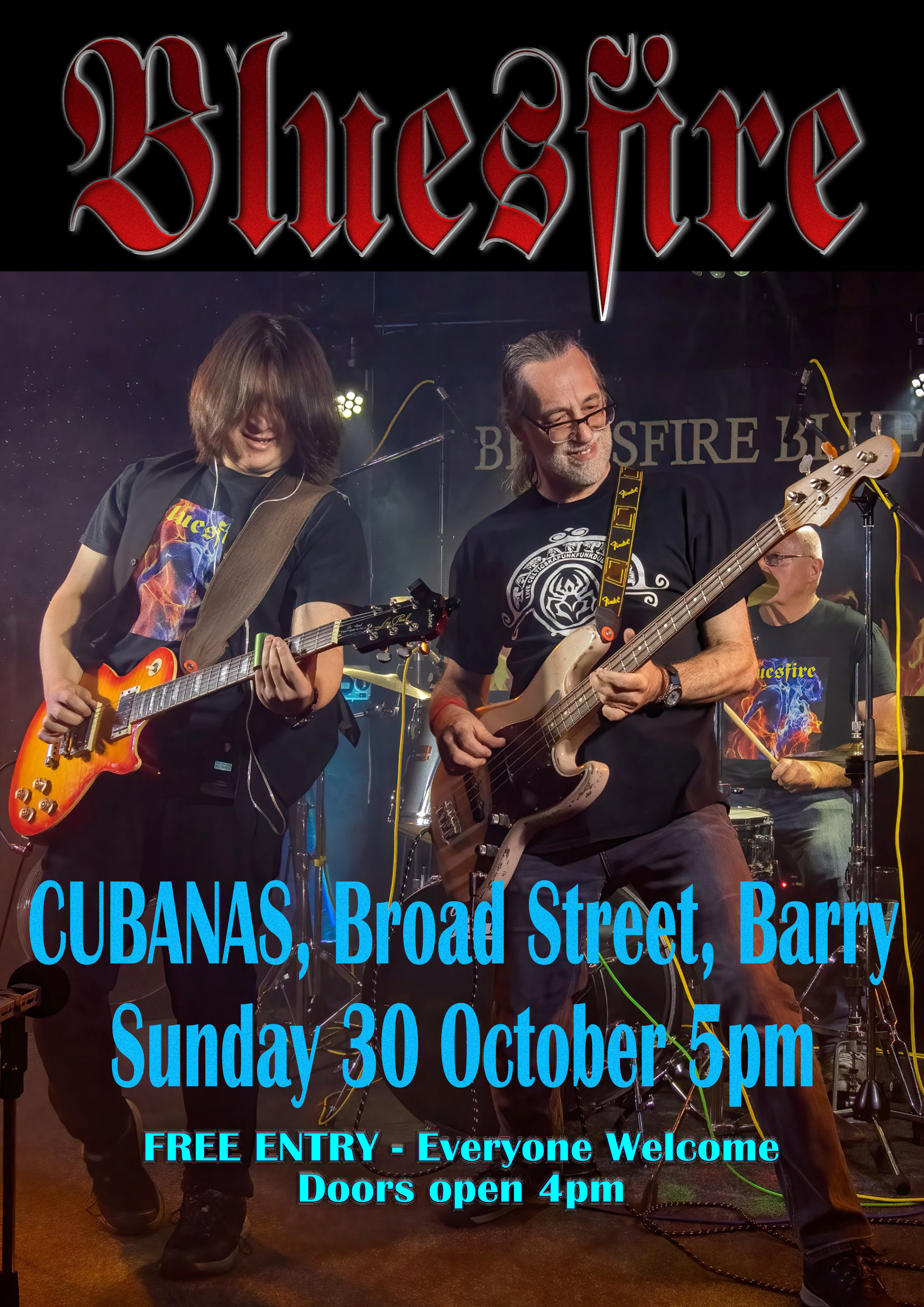
The Fugitives:
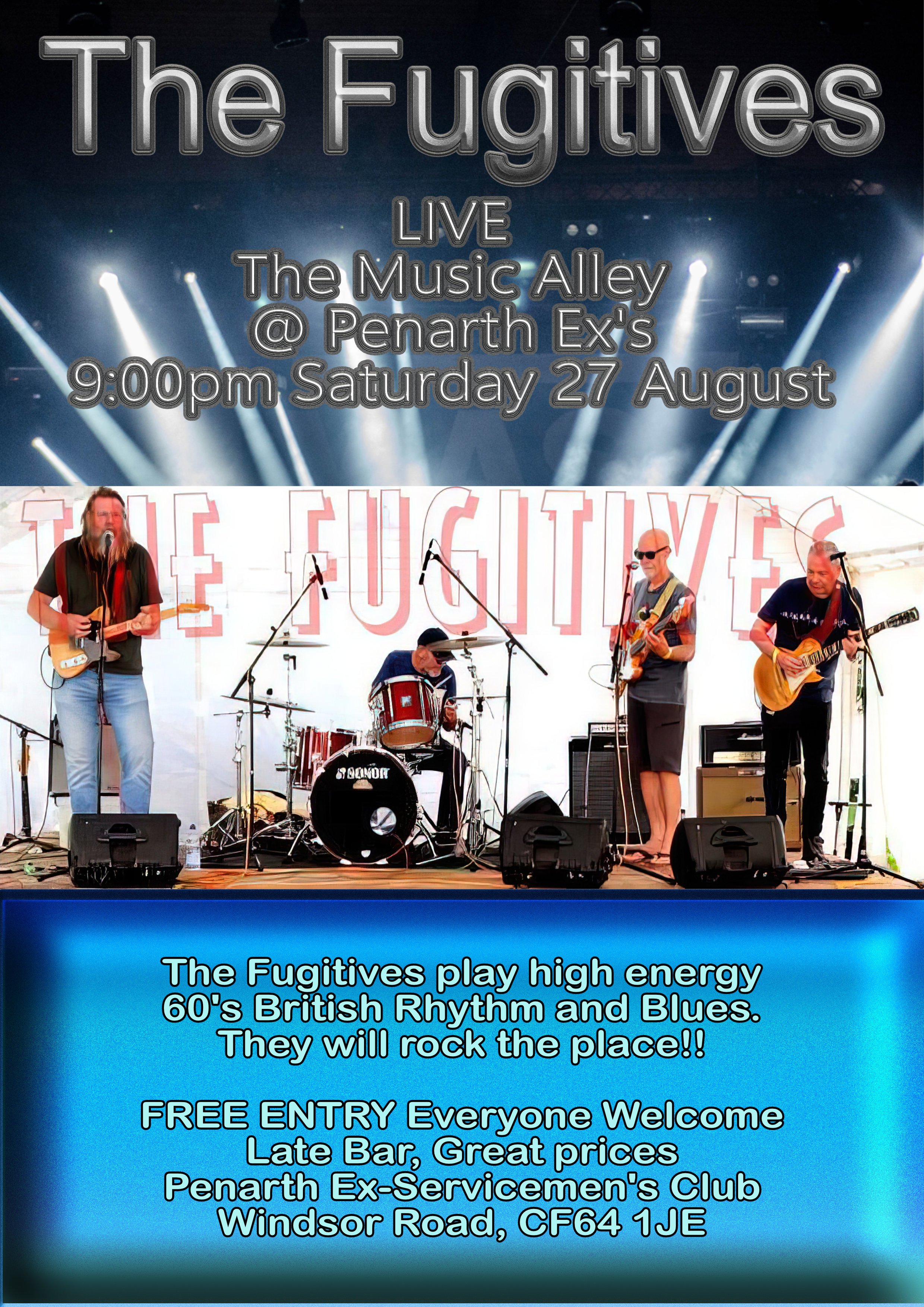
Fortunate Sons:

The Troubadours:
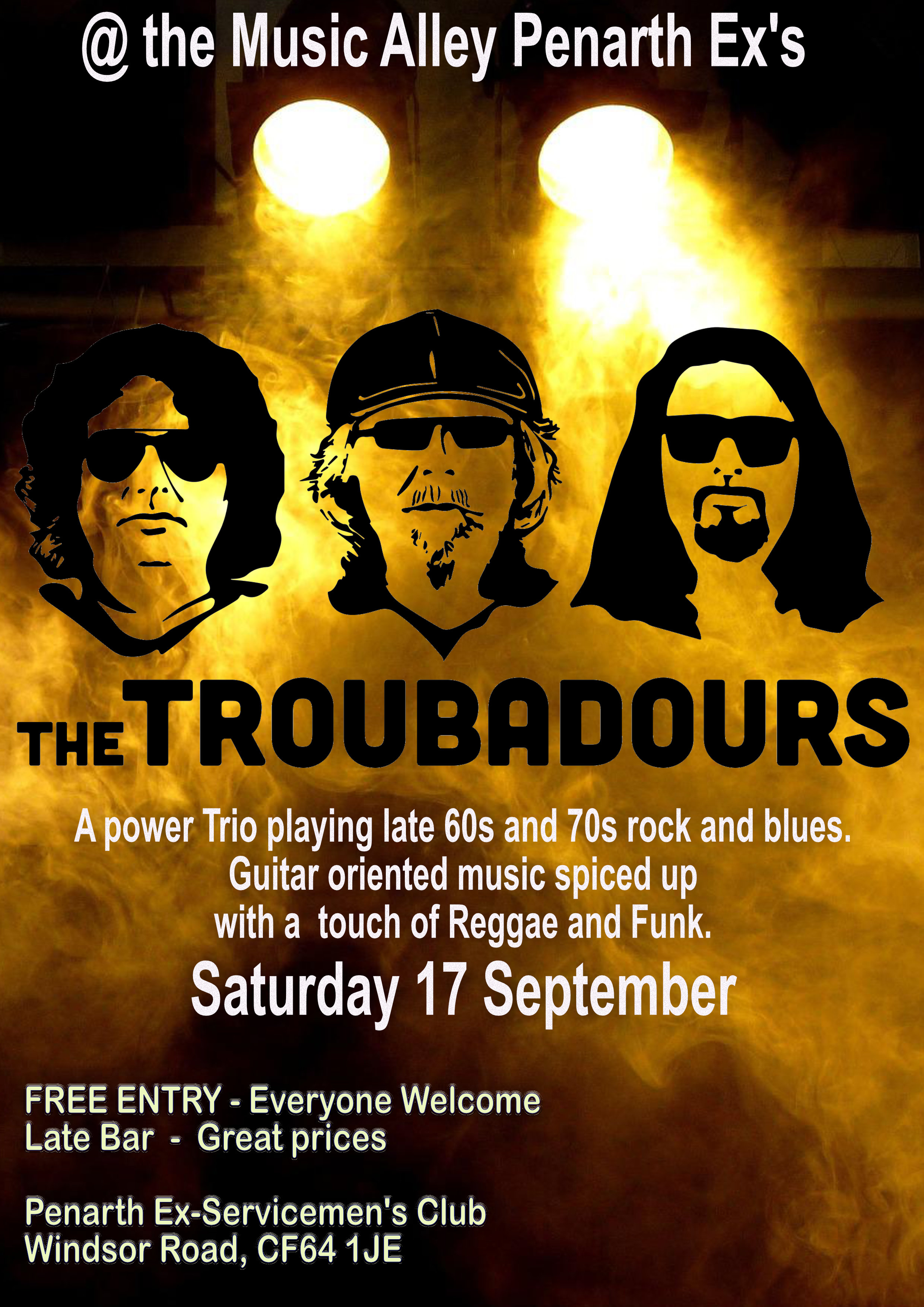
Monthly Posters:
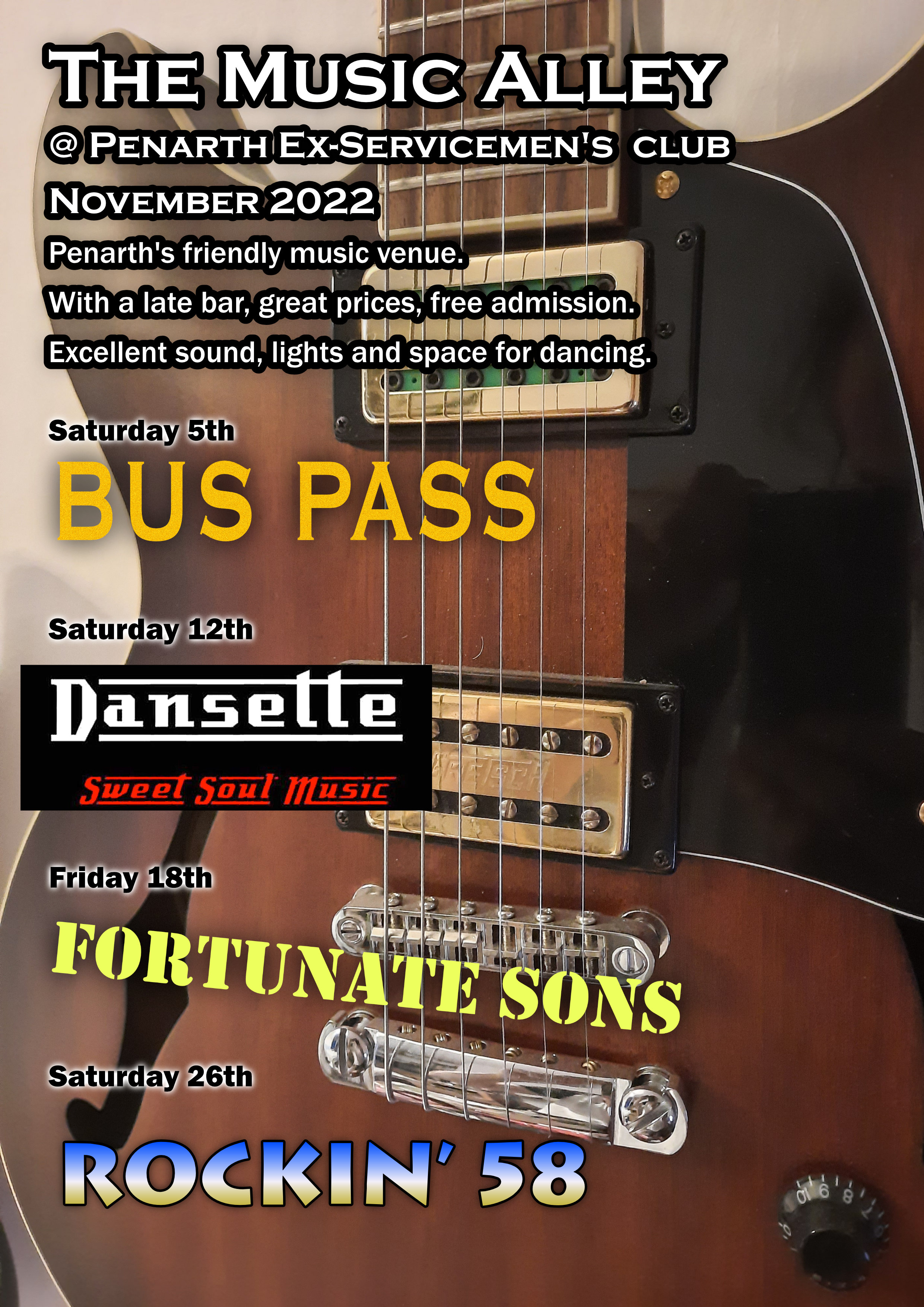

The legend of 'Trace Elliot Watts' is that they are louder than anyone else's. Any electronic engineer will happily tell you that's utter rubbish,- a watt is a watt. On the other hand Hi-Fi buffs and musicians will start coming out with endless tales of amps that are 'louder' than they are supposed to be, as happened in a recent discussion on the marvellous Basschat Forum.
Its a fact that you have to walk a long way to find any musician who has played through a Trace Elliot amplifier and didn't think it was loud enough.
So here's my perspective and an explanation of why not all watts are created equal.
The short answer is marketing.
Back in the eighties, keen to flog more product, Amstrad came up with the ideal of 'music power' which rated their stereos according to their capacity to handle transients, like cymbal crashes and rimshots. This made them appear at least twice as powerful as amps rated by their 'RMS' capacity. Oh how we laughed at tiny silver plastic music centres claiming to put out 100Watt (peak music power). Of course it was Alan Sugar who laughed longest - all the way to the bank...
From then on, it a simple 'wattage rating' has never been enough to accurately judge how loud an amp is in a real setting, because manufacturers use all sorts of formulas an ways of assessing power... 'Peak Power', 'Total System Power' and 'Peak Music Power Output'...
(Lets just mention, Trace Elliot amps are not rated for 'music power').
The longer answer is a mixture of practicality, psychology and marketing.
There was some truth in Amstrad's approach - music (at least in the old days before the 'Loudness Wars') has its peaks and troughs. The volume of an amp isn't just its ability to deal with brief transients, it relates to the bits in between as well. Today virtually every consumer amplifier, from tiny desktop speakers up, quotes some sort of 'calculated, theoretical, maximum transient power rating'.
If you really want to know, objectively, how powerful an amplifier is, you typically feed it a 'sine wave' signal, increase it until it is not quite distorting from being too loud. This power is usually stated as the 'continuous route mean square output power' or 'continuous RMS power'.
Imagine a valve amp and a transistor amp, both being fed a pure sine wave such that they are almost starting to clip. Lets assume this is at the same power level for both amps, so on paper they both have the same continuous RMS power. This signal will give you the longest constant outpout - all day long, not just for a crescendo.
Even with this, amplifier manufacturers can play their marketing games. Distortion is measured as 'Total Harmonic Distortion', given as a percentage. Some people rate at 0.01% THD, some at 0.1%, usually at 1% THD which is pretty much inaudible. Some even rate at 10% THD, at which point you will have no trouble hearing that the sound is 'changed' by the amp being pushed hard.
Let's consider a pair of Bass Amplifiers, one transitor, one valve
Play bass through both amps and turn up. Push the valve amp into clipping on the loudest bits and it will sound rich, push the transistor amp into clipping and it will sound harsh. They might have the same THD, but the valve amp will be 'easier' to listen to (that's why 97.8% of guitarists love an overdriven valve amp tone).
This also means that you can't have the transistor amp turned up as loud for the quieter bits as the valve amp, as the transistor amp sounds overloaded when you dig in.
So the amps have identical wattage ratings, but the valve amp can be played in a way that is louder. Effectively it is compressing the signal upwards at the cost of distortion, but a type of distortion people generally like.
More Power!
Also, some amps have power supplies with undersized transformers or smoothing capacitors, so when played hard the voltage 'droops' and overall power drops. Quite simply, a quality amplifier can pump up the volume for longer.
And there's more!
Other things affect volume; it's easy for a well designed speaker cab to double the volume for example.
There's a famous test on line where a Fender HRD (40W), Vox AC30 (30W) and Marshall stack (100W) are compared and they come out in that order - yes folks, the AC30 is louder than the Marshall stack. The numbers were 124.6 dB, 124.1 dB and 119.5 dB. Close, but enough to hear the difference between the stack and the two combos.
www.harmonycentral.com/marshall-100-watt-stack-vox-ac30-fender-volume/
It's not just speaker design. I have a Vox Valvetronix which is marketed as a 20W amp, but it has a 'power control' (it's a modelling amp) and you can actually turn it up to 30 watts... so not all headline wattage ratings are exaggerated!
But does Power make much difference anyway?
The biggest pitfall is that, at usual volumes (i.e. not dead quiet or super loud) a doubling of perceived volume requires a ten-times increase in power. I've played a 1-watt battery powered amp through a JCM800 1x12" cab and it was way to loud to play in the living room. Anyone with a Blackstar Fly (3W) can test this!
Most bass amps fall between 150W and 500W, with outliers at 100W and 1000W and above. The difference between 150W and 500W RMS is pretty small and in practice the extra volume is largely down to the same thing as that valve/transistor comparison - the more powerful amps have more headroom, i.e. you can play them significantly louder without distortion.
Sorry guys, your 1000W mega-amp is, fundamentally, only four time louder than spotty kid's 10W practice amp... through the same speakers.
Back to Trace Elliot Watts
As for Trace Elliot watts, I think the legend (or myth if your are a sceptic) is down to five things:
- Honest power ratings - your can stick a sine wave into one and get the rated power out of it continuously. I know, I've done it, and actually got rather more than the rated output.
- Good power supplies that can sustain the rated outputs and don't 'droop' excessively.
- Mosef amplifiers that, perhaps, clip less harshly and sound closer to valve amps.
- Well designed cabinets with quality drivers.
None of those three is exclusive to Trace Elliot, but taken together they mean a Trace amp is always going to be near the top of the pile when comparing amps of a given power rating.
Unicorn Amplifiers...
In the early days of Trace Elliot's dominance of the bass amplifier market demand for products sometimes exceeded supply of parts; it's been reported on many occasions that they just swapped in parts from other amps. I have the evidence - a '150W' combo fitted with a 200W/300W into 4 ohm power supply, but with a 150W amp board. Aware this was pushing their luck, the amp has a cooling fan fitted and the sockets for an extension cab left out, yet it still dumps over 200 watts (and more) into 8 ohms. Even so it has had to have the power transistors replaced in the past - presumably because putting 200 Watts through a 150 Watt amplifier is not a good idea in the long run.
- This penchant for making amps with the wrong power supply when components run short, means there are 'under-rated' amps out there that really do sound louder than their ratings.
So, my guess is that these 'black swan' or 'unicorn' amps that were noticeably over-powered for their rating are the true source of the legendary 'Trace Elliot Watts'. You start with amps that are loud, and then add a few rogues that are genuinely louder than their rating.
Finally...
Good news for me, carrying out a service on my Trace Elliot 1110 combo, it came to light that it had this higher power supply. I was able to fit not just the sockets for an extension cab, but an extra pair of output transistors capable of taking the full output into 4 ohms. My 150W amp is now a 300W amp ... and that's 300 Trace Elliot Watts. Bow down, mortals...
The Boss HM-2 pedal creates the defining sound of 1980s heavy metal guitar. It also works excellently with bass guitar, unlike many other guitar-targeted distortion pedals. It's like playing through an overdrive pedal and a fuzzbox through a distortion pedal into a Marshall stack all dialled to 11...
I was distressed to find that mine did not work properly with a new external 9V supply - the status LED barely lit and the sound was feeble and barely audible. After much prodding around with a voltmeter it was clear the pedal was OK, but looking at a schematic I could see there is a resistor and a diode in the external power supply line. Around four volts were being 'lost' across the resistor. A qick google confirmed my thoughts. The diode is a protection against attaching a reversed power supply, and the 330 ohm resistor is to drop the 12V from a Boss ACA supply to around 8-9V (at the power consumption of the HM2-pedal).
This may seem odd - why feed pedals on 12v then drop it to 9V to match the battery?
Back in the eighties regulated power supplies were pretty rare, the typical nine to twelve volt 'wall wart' was a hefty lump with a transformer in it that often gave as much as 16 volts or even more off load. This simple arrangement provided a degree of protection by limiting the maximum current and voltage fed to the pedal circuitry in the event of using such a cheap power supply.
Indeed back in the day I used a basic transformer with a switch for several different (unregulated) output voltages to power this and other pedals - I used to start at 6V and click the volts up in 3V steps until everything worked, I think the 9V setting was best but it probably gave rather more than 9 volts.
In the happy, modern world regulated supplies are the norm so no-one is going to put the wrong voltage into their pedals... are they? See how the old pedals have 'ACA stickers but my shine new TU-3 does not... by the way web suggestions that 'daisy chaining' power to the HM-2 is a cure are wrong, but interestingly the BEQ-7 is happy to operate on 9V.
The nice well regulated no-noise PSU I had made just wasn't delivering enough juice for the HM2, but the cure was simple, once I knew the problem. I just soldered a short jumper across the dropper resistor. I did not (as some suggest) short out the diode as well - this only takes 0.6 volts but provides essential protection against connecting a reversed power supply. The great thing about this mod is that it is totally reversible, just unsolder the jumper and the pedal is back to original condition.
And does this work? Of course it does, let me polish my djent while the world gets ready for my metal onslaught...
The Squier Vintage Modern Jaguar Short Scale Bass
The Jaguar SS has become something of a legend among bass players, as a stand-out budget instrument even at a time when affordable instruments are of increasingly good quality. Some people go as far as saying these basses are responsible for the new popularity of short scale basses across the board.
Despite being produced under Fender's budget brand of Squier in South Korea, these basses are well known for their extraordinary playability combined with great looks. Part of this is, no doubt, down to the fact they are made by for Fender by Cort whose workmanship and quality standards are very high. For an RRP around £200 (as of 2019) you get a ridiculously good instrument for your money. The Jaguar is also stunningly beautiful (in my humble opinion) being based on the Jaguar guitar, which is rather chunkier than the Precision and Jazz bass shapes.
The bass is a short scale instrument - don't believe the guff that this means it is for students, guitarists and people of small stature! Some thirty years ago I played a short-scale Fender Mustang bass and it was one of the most fun instruments I ever handled, and that's why I tried out the Jag SS - I instantly discovered how comfortable it is to play and how it flatters your abilities! I'm 6' 2" with long fingers and have several 24-fret full scale length basses, so I don't struggle with a long scale, but I find the short scale bass is much harder to put down. Partly this is due to lower string tension, which makes playing less tiring and gives a deep, warm tone.
Obviously some corners have to be cut to keep down the price, beyond simply outsourcing manufacture. In the case of the Jaguar SS, this is partly achieved by leaving out the additional control plates and active circuitry of the higher end Jaguar basses. But you still get things like a lovely fast neck and rolled fingerboard edges which give the bass its playability.
There is one widely recognised weakness, though. The split P-bass pickup has a great driving tone that can give you a good taste of real Precision bass rumble. In contrast, the bridge J-bass pickup has a low output and a distinct lack of 'bite' or 'honk'. Many owners replace this pickup with an after market one, say by Jim Dunlop or Di Marzio, but this could add 40-50% to the price of the bass. There is a cheap alternative that works very well.
Supercharging the Jaguar SS Bridge Pickup
First, go on eBay and obtain some 5mm diameter by 3mm thick neodymium magnets, you will need eight of these.
Unplug the bass and loosen off the strings - you don't need to remove them - and unscrew the four pickup screws. With a little effort you should be able to pull out the pickup. Leaving it wired to the instrument, peel off the backing foam that holds the two springs in place and put to one side. You should see two ceramic magnets either side of the pole pieces.
For the 'level one' supercharge you need to use a scalpel to clean away the wax from the ends of the pole pieces. Your new magnets will probably all be stuck together as a lone stack. Carefully wave the end of the magnet stack over the bottom of the pole pieces. One way round you will feel repulsion, the other attraction. Once you can feel the magnets being attracted into the pole pieces you know which way around they need to be fitted. Simply slide them one at a time from the end of the stack and sit one on the bottom of each pole piece. Secure in place with a drop of superglue. Reattach the foam and springs, refit the pickup and tune up. You should notice the pickup now has much more 'middle' and punches through rather better.
You are likely to find it is still quite a bit less powerful than the P-bass pickup, even when set nearer to the strings. If you want super output from the pickup you can do the 'stage 2' mod instead. For this you need a block of wood to support the pickup from below while you use a small hammer and a blunt screwdriver or punch to gently tap the pole pieces down below the front surface of the pickup by about 4mm. Use the same technique to get the magnets the right way around, but this time the surface of the magnets repelled by the bottom of the pole pieces is the right one to have down as you fit them in the holes in the pickup cover. Once you have all eight in place, turn the pickup over face down on your wooden block. Gently tap the bottoms of the pole pieces until the magnets are flush with the front of the pickup cover. Because the cover helps locate the magnets you should not need any glue, unless any of the pole pieces have become loose.
After refitting the stage 2 modded pickup you should find you can get a nice funky tone which is much closer in output to the neck pickup, also turning both pickups full up should give a rich, rounded tone. Finally you can use the bridge pickup with the tone backed off for more nasal 'honk' and less harsh sound.
If you find that with the two pickups turned full up the sound become very weak and trebley, then you have fitted the magnets upside down - the solution is obvious!
You can spot a stage two modified pickup because its pole pieces are smooth rather than having a spiral pattern on the end.
Send it!

